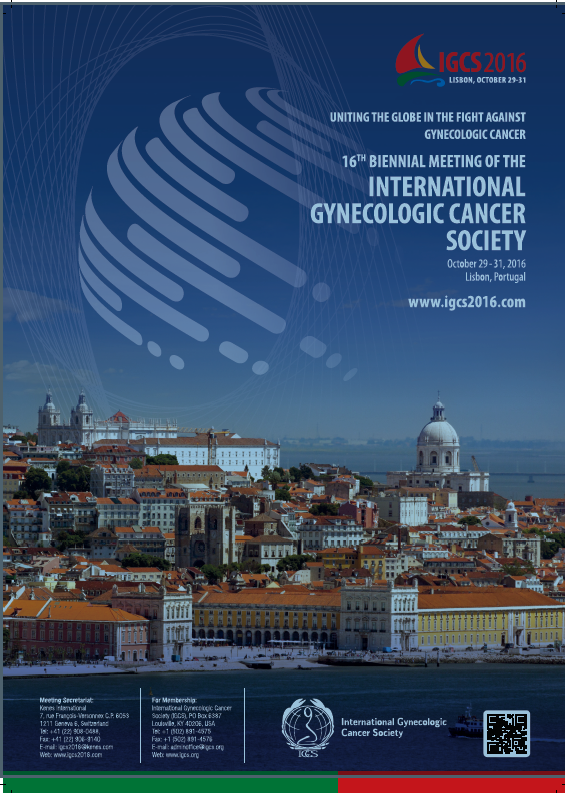Abstract: |
| OS ANALYSIS BY TREATMENTS RECEIVED AFTER TRABECTEDIN/PLD OR PLD ALONE IN PATIENTS WITH RECURRENT OVARIAN CANCER: PLATINUM VS NON-PLATINUM . |
| Background and Aims: Platinum-resistance mechanism in ovarian cancer is multifactorial. At lower resistance levels, DNA repair through the nucleotide excision repair (NER) pathway is the primary mechanism of cellular resistance; at higher level glutathione metabolism appears to be the most important pathway (Saldivar, Gynecol Oncol 2007). Trabectedin may lead to increased sensitivity to subsequent platinum through its interaction with NER (Colmegna, BJC 2015). We retrospectively evaluated results of patients with ROC treated with trabectedin/PLD or PLD in the randomized phase III OVA-301 (Monk JCO 2009) and followed by platinum vs. non-platinum treatment to investigate if the molecular hypothesis of the synergistic effect of trabectedin/PLD followed by platinum correlates with OS results previously obtained. Methods: An exploratory OS analysis, counted from the administration of trabectedin/PLD or PLD, was performed in patients with a PFI from 0-6 and 6-12 months, who received subsequent treatment in OVA-301. Results in platinum-resistanbt patients were further analysed depending on resistance level. Results: Trabectedin/PLD followed by platinum resulted in statistically significant improvement on OS in both groups (Table 1). In platinum-resistant patients, differences were mainly observed in patients relapsing between 3 and 6 months (Table 2). No significant differences with PLD were observed in either group.   Conclusions: Results suggest that using trabectedin/PLD followed by platinum (vs. non-platinum) may prolong survival due to potential re-sensitization to platinum rechallenge. This may result from trabectedin’s interaction with NER machinery, which plays a key role in the development of intermediate levels of platinum resistance. These hypothesis-generating data are being currently investigated in a prospective phase III study. |
SE PUEDE YA AFIRMAR QUE TARLATAMAB ( IMDELLTRA BY AMGEN ) SUPERA AMPLIAMENTE AL LURBINECTEDIN ( ZEPZELCA BY PHARMAMAR ) TANTO EN PRIMERA LÍNEA DE MANTENIMIENTO ... COMO EN SEGUNDA LINEA PARA EL TRATAMIENTO ESTÁNDAR DE SMALL CELL LUNG CANCER EXTENSIVE-STAGE .
30 octubre 2016
Yondelis . Results suggest that using trabectedin/PLD followed by platinum (vs. non-platinum) may prolong survival due to potential re-sensitization to platinum rechallenge.
Yondelis is an effective drug in combination with PLD for patients with previous response to platinum combination even with short progression free interval.
 International Gynecologic Cancer Society Meeting ( IGCS ) Portugal del 26 al 31 Octubre 2016 .
International Gynecologic Cancer Society Meeting ( IGCS ) Portugal del 26 al 31 Octubre 2016 .Abstract:
Audit of trabectedin use in high grade serous carcinoma
Background and Aims:
Background: We conducted a retrospective audit looking at the effectiveness of trabectedin in high grade serous carcinoma as a single agent and in combination with pegylated doxorubicin (PLD). All patients received at least three line of chemotherapy. Trabectedin plus PLD was given second line in two patients, third line in two patients and fourth line in two patients.
Methods:
Retrospective audit of patient records.
Results:
One patients received two cycles, four patients received six cycles; and one patient received fifteen cycles. One patient progressed after two cycles, one patient mixed response, good in abdomen but new lung metastasis, one patient showed radiological stable disease, but with CA-125 response. Three patients showed CA-125 and radiological response.
Duration of survival was 14 months, 18 months, 30 months, 30 months, 38 months, 9 years and 15 years. The most common adverse events reported was fatigue and sepsis.
Conclusions:
Conclusions: Trabectedin is an effective drug in combination with PLD for patients with previous response to platinum combination even with short progression free interval. Trabectedin has manageable toxicity profile.
Suscribirse a:
Comentarios (Atom)